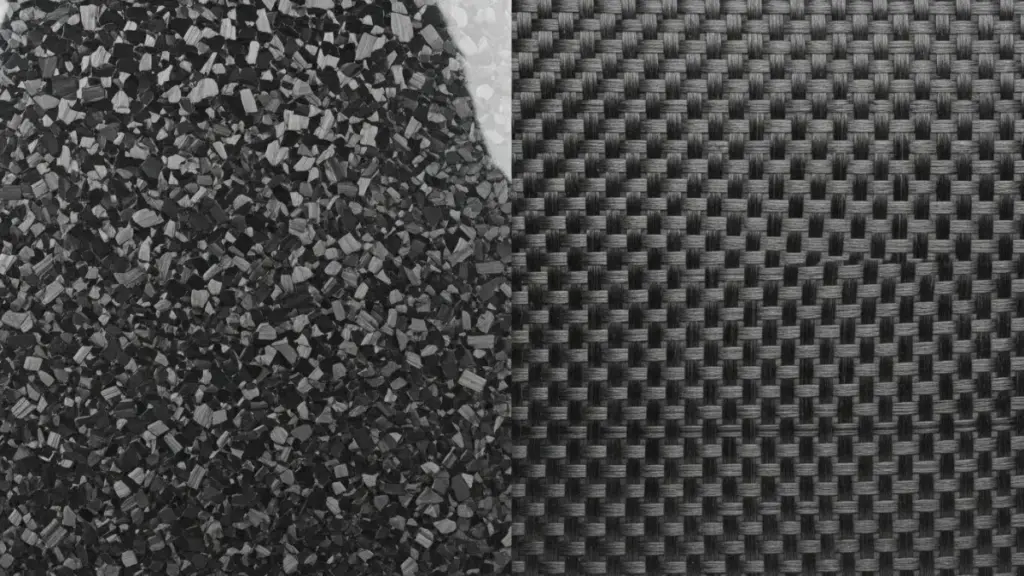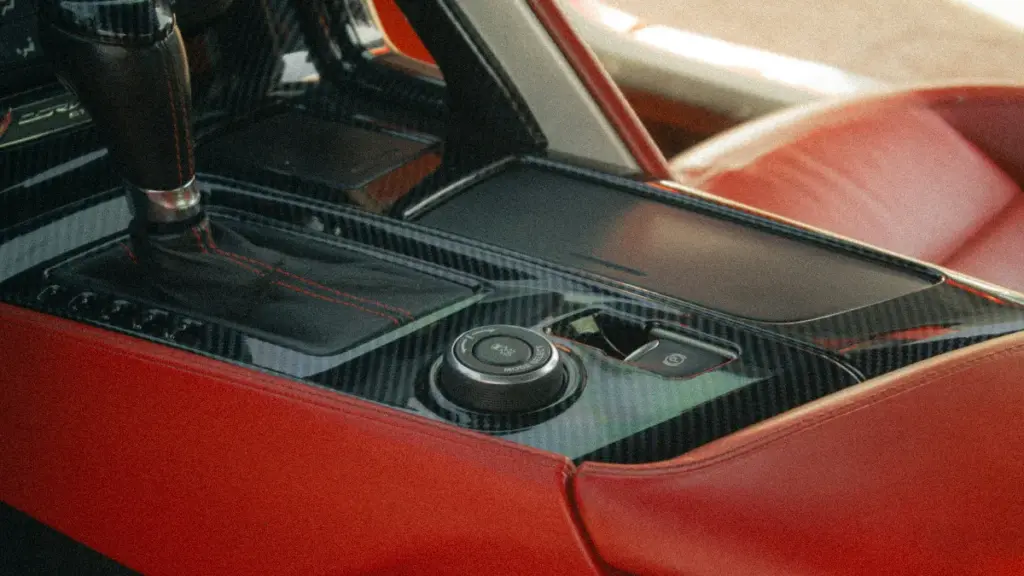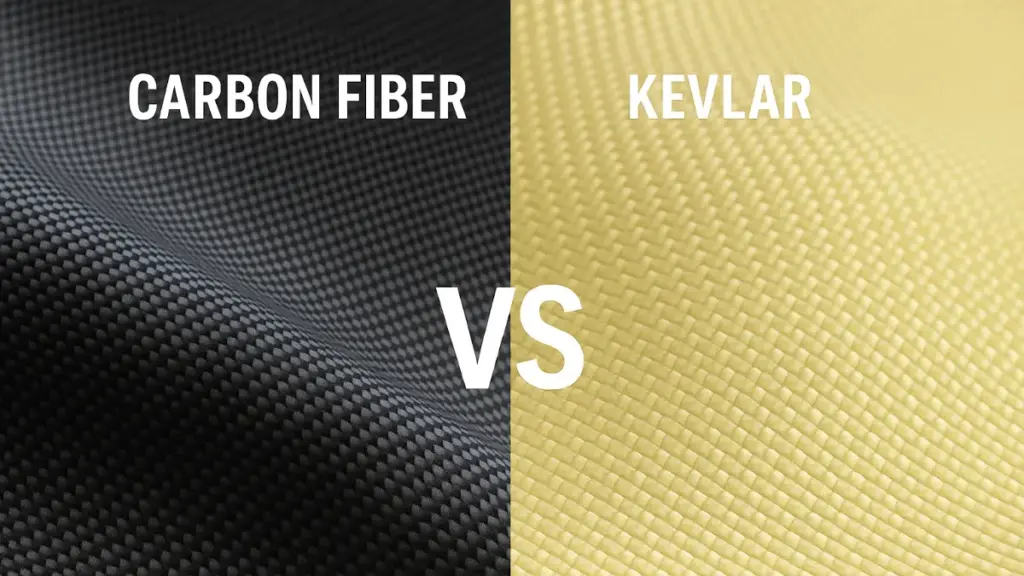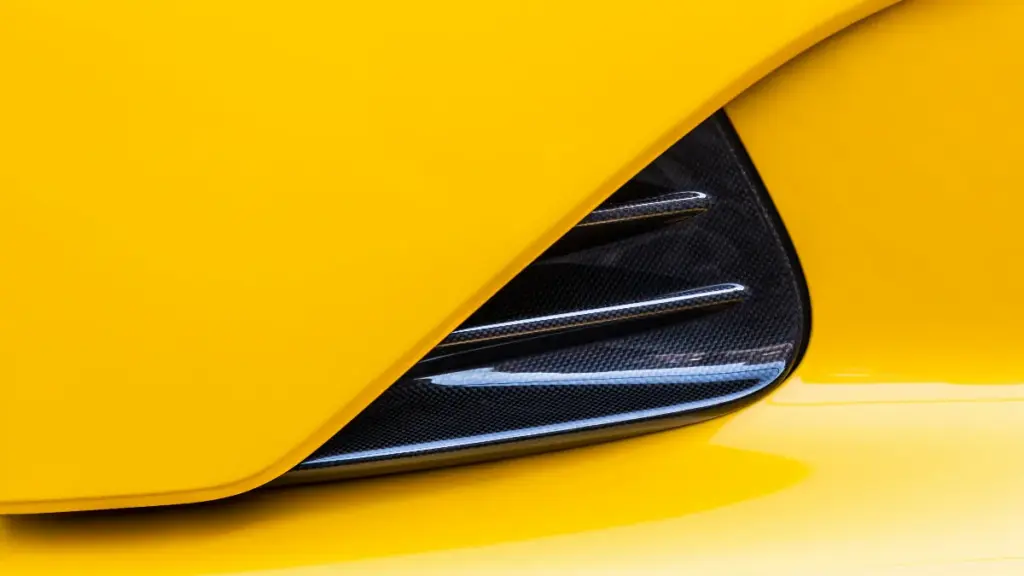
Fonte: Istock
Ter um carro é uma necessidade para a maioria das pessoas hoje em dia. Sem um, você pode não conseguir ir ao trabalho, à escola ou se deslocar para qualquer lugar que desejar. Quando se trata de carros, o exterior brilhante e as linhas elegantes podem vir à mente da maioria das pessoas. Mas quando você pensa em comprar um carro, a aparência não deve ser a única preocupação; o interior é igualmente importante, especificamente seu conforto, estilo e funcionalidade, que dependem basicamente dos acessórios internos e seus materiais.
Com uma ampla gama de materiais para interiores de automóveis disponíveis no mercado, você pode se sentir sobrecarregado por tantas opções, desde tecidos de couro clássicos até tecidos leves e resistentes. exterior do carro em fibra de carbono. Bem, você está com sorte – este artigo compartilhará com você informações sobre materiais comuns para interior de automóveis e peças de acabamento interno automotivo, incluindo seus tipos, prós e contras, e uso.
Antes de abordar os tipos e aplicações dos materiais para interiores de automóveis, é necessário esclarecer o que são os interiores de automóveis. Os interiores de automóveis incluem estofamento automotivo and accessories inside a vehicle, including automotive trim materials such as leather, nylon, and polyester, and auto accessories like the steering wheel, car seats, door handle, and side panels.
Por que o interior do carro é tão importante?

Fonte: Istock
Agora que temos uma definição clara do interior do carro, o próximo passo é aprender a importância dos interiores dos carros para a indústria automotiva, concessionárias e clientes.
A indústria automobilística
Como parte importante de um carro, o interior do carro representa mais de 60% do design geral do veículo, muito mais do que o design exterior, o que demonstra a importância e a complexidade do design de interiores. Isso é verdade. Afinal, designers de interiores automotivos precisam levar em consideração uma variedade de fatores, como segurança, estilo, design ergonômico e escolhas de materiais, cores e acabamentos. De modo geral, designers de interiores precisam encontrar um equilíbrio entre estética e funcionalidade ao projetar interiores de automóveis.
Fabricantes
Embora a aparência externa de um carro chame a atenção dos clientes, o interior tem um peso considerável na hora de decidirem comprar um carro. Afinal, o interior do carro é a parte mais vista pelos clientes. Um carro de alta qualidade, com interiores confortáveis e um estilo impressionante, certamente contribui muito para a compra de um carro. Por isso, fabricantes e concessionárias também valorizam o interior dos carros.
Compradores de carros
Similarly, the car interior is a key consideration. Interior color shows the character of a car and reflects the taste and personality of the car owner. Dark-colored interiors convey sophistication, luxury, and a sense of calm. Big, bold colors such as red and yellow evoke happiness and energy and are associated with sporty, young, and aggressive drivers. Light interiors are more elegant, classy, and simple.
Além de ter um visual bonito e elegante, o interior do carro também deve ser funcional e durável que envolve a ergonomia do carro. O interior do carro é frequentemente projetado ergonomicamente, desde a disposição dos acessórios até o design da posição do assento e dos botões. Por exemplo, o motorista pode ajustar vários controles, como a altura do assento e os espelhos, para garantir o máximo conforto e uma boa visão da estrada. Os botões de controle são acessíveis ao alcance da mão. Quando o motorista está na estrada, sua mão pode alcançar qualquer dispositivo e botão que desejar sem tirar os olhos da estrada. O interior do carro centrado no motorista proporciona aos passageiros e motoristas conforto e prazer ao dirigir, garantindo segurança e facilidade de uso.
Quick Table of Car Interior Materials
Now that you’ve seen how different people prioritize various aspects of car interiors, you’re probably eager to dive into the available materials. Don’t worry—we’ve summarized the most common options in the table below for a quick comparison.
| Material | Durabilidade | Comfort | Aesthetic Appeal | Maintenance | Eco-Friendly | Best For |
|---|---|---|---|---|---|---|
| Couro | High | Soft & Comfortable | Luxurious & Premium | Moderate (requires care) | Low | Luxury vehicles, high-end interiors |
| Vinil | Moderate | Firm | Sleek & Stylish | Low (easy to clean) | Moderate | Budget-friendly, stylish interiors |
| Nylon | Moderate | Firm & Practical | Versatile | High (stains easily) | Moderate | Everyday use, budget-conscious interiors |
| Poliéster | Moderate | Soft & Comfortable | Elegant & Affordable | High (requires special cleaning) | Moderate | Family cars, high-traffic areas |
| Fibra de carbono | Very High | Firm | Modern & High-Tech | Low (easy to clean) | Low | Performance cars, sporty and luxury interiors |
| Alumínio | High | Firm | Sleek & Industrial | Low (corrosion-resistant) | Moderate | Lightweight, high-performance vehicles |
| Fibra de vidro | High | Rigid | Sleek & Practical | Low (easy to maintain) | Moderate | Commercial vehicles, lightweight parts |
What Types of Interior Fabrics Are Used In Cars?

Fonte: Istock
The main fabrics used for car interiors are leather, vinyl, nylon, and polyester. Each offers unique benefits, but the best materials for luxury car interiors depends on factors like durability, comfort, affordability, and maintenance.
Couro
- Prós: O couro é confortável e macio, proporcionando um passeio elegante e confortável. É fácil de limpar e resistente a manchas e líquidos. Em caso de derramamentos e sujeira, ele não os encharca imediatamente. Com um pano úmido, a mancha pode ser facilmente removida. Se o couro for bem conservado, pode durar a vida toda. O couro representa luxo e bom gosto, agregando valor à estética geral dos interiores. Como um material premium, o couro também aumenta muito o valor de revenda do carro.
- Contras: O couro é significativamente mais caro em comparação com outros tecidos e, portanto, não é acessível a todos os compradores de carros. É vulnerável a arranhões causados por bordas afiadas e objetos como unhas de animais de estimação. É complexo e caro de consertar. Além disso, a manutenção regular é necessária para manter o couro com boa aparência e evitar que o material rache com o tempo.
Vinil
- Pros: Vinyl is easy to clean and maintain, as it is nearly non-porous and resistant to staining and dirt. Spills can be wiped off easily with a damp cloth. It offers the look of leather at a more affordable price, making it ideal for those on a tight budget or seeking an environmentally-friendly option. Vinyl is durable, lasting a long time without fading or cracking, and is favored by manufacturers for its balance of cost and quality.
- Contras: Assim como o couro, o vinil é facilmente arranhado ou danificado por objetos pontiagudos. O material absorve mais calor no verão, então você pode suar e ficar desconfortável ao sentar em superfícies de vinil.
Nylon
- Prós: O nylon é conhecido por sua impressionante resistência, durabilidade, preço acessível e versatilidade. Sendo um material resistente e durável, o náilon resiste ao desgaste diário e tem longa durabilidade. Está disponível em uma ampla variedade de cores, padrões e texturas. Materiais de náilon não são tão caros de produzir, por isso as montadoras preferem esse material de menor custo.
- Contras: Devido à sua natureza porosa, o náilon mancha fácil e rapidamente. Derramamentos nos assentos podem ser absorvidos pela estrutura da almofada, exigindo manutenção bastante regular. Ele também absorve odores facilmente.
Poliéster
- Prós: Similar to suede, polyester is very soft and comfortable but inexpensive, giving the interior a more luxurious feel. Polyester is a breathable fabric. So it won’t get hot in the summer and stick to you. Besides, polyester can withstand a lot of wear and tear, making it an excellent choice for families with children or pets.
- Contras: O poliéster é propenso a manchas, pois absorve odores desagradáveis e mancha facilmente com sujeira e líquidos devido à sua textura porosa. Portanto, requer limpeza regular. Além disso, limpar o poliéster pode ser um incômodo. Para fazer o poliéster parecer novo novamente, apenas um pano úmido e água não são suficientes. Uma solução de limpeza específica para microsuede é necessária para remover a sujeira acumulada.
Materiais de acessórios comuns

Fonte: Pexels
Different fabrics are used inside a car depending on affordability, comfort, ease of cleaning and maintenance, and aesthetic value. Likewise, different types of car interior are needed to design different parts and accessories of a car, and these materials affect the durability, design, and quality of a vehicle. Here are several common materials used in car accessories:
Aço
O aço é talvez o mais utilizado na produção de automóveis atualmente. A composição do veículo é superior a 50%, feita de aço. Mas isso não significa que apenas um tipo de aço seja usado em peças automotivas. Na verdade, vários tipos de aço são utilizados na produção de uma variedade de peças e componentes de automóveis para atingir um certo nível de durabilidade e funcionalidade. O aço é muito duro e forte, e oferece grande resistência à corrosão. Todas essas propriedades o tornam adequado como material para a fabricação de automóveis. Geralmente, o aço é usado principalmente no chassi e na carroceria de um carro, incluindo freios, painéis das portas, estrutura do carro e vigas de suporte.
Fibra de vidro
Fiberglass is durable. É resistente à ferrugem, corrosão e condições climáticas extremas, proporcionando boa resistência ao impacto e resistência à tração. Pode substituir o aço em áreas onde o aço pode ser facilmente corroído. Por ser um material leve, a fibra de vidro é especialmente importante para peças automotivas onde o peso é considerado um fator crucial. A fibra de vidro é flexível e pode ser moldada em qualquer formato desejado. Com essas vantagens, a fibra de vidro é comumente usada em pastilhas de freio, embreagens e painéis de portas de veículos comerciais.
Alumínio
Aluminum has been used in the automotive industry for decades due to its unique properties. It is much stronger than steel and can withstand extreme temperatures and pressures. Aluminum is lightweight and corrosion-resistant, making it ideal for manufacturing inside of the car parts like body panels and air conditioner condensers.
Its ability to be shaped into complex forms and its durability also enhance fuel efficiency by making the car lighter and improving performance. Aluminum is increasingly being used in car decoration as well as custom carbon fiber interior parts due to its versatility and strength.

Fibra de carbono
Carbon fiber is a new premium material used for producing car parts, and carbon fiber car accessories are getting popular in the automobile industry, especially in high-end race vehicle manufacturing. Since some cars – notably sports cars – are intended to be speedy, carbon fiber can improve speed and body strength while reducing the overall weight of a vehicle.
For car parts intended to be lightweight but durable, carbon fiber is also the perfect material. Peças de carro em fibra de carbono are much stronger but lighter. It can withstand heat and pressure over time and won’t deform. With this lightweight-but-strong benefit and sleek appearance, interiores de carros de fibra de carbono estão se tornando cada vez mais populares na indústria automotiva. A fibra de carbono é frequentemente usada em componentes da carroceria, rodas, aros e acabamentos internos.
Emerging and Sustainable Interior Materials
Luxury Meets Sustainability
The best materials for luxury car interiors are now integrating sustainable elements without sacrificing elegance. Eco-conscious buyers can enjoy high-end finishes while contributing to a greener future.
Recycled & Eco-friendly Materials
Materials like recycled fabrics, biodegradable plastics, and vegan leather are gaining popularity as sustainable choices for the interior of car designs. These options reduce the environmental footprint while maintaining style and comfort.
Carbon Fiber Innovation
Carbon fiber car interior accessories are increasingly popular due to their lightweight and durable properties. They offer an eco-friendly solution without compromising on luxury or strength.
Natural & Sustainable Alternatives
Materials such as cork, bamboo, and recycled polyester are making their way into types of car interior designs, offering stylish yet sustainable options for car decoration. These materials provide a premium feel with less environmental impact.
Selecting and Maintaining Car Interior Materials
How to Choose the Right Materials for Your Car Interior
- Durability vs. Aesthetics: Choose materials like carbon fiber car interior accessories for a balance of durability and modern aesthetics. For luxury, leather offers premium comfort but requires more care.
- Consider Your Use: Materials like nylon or polyester are cost-effective and durable for everyday use. If you prioritize comfort, opt for softer fabrics, but ensure they can withstand wear and tear.
- Customization: For a unique touch, custom carbon fiber interior parts allow you to personalize your vehicle while maintaining high strength and lightweight properties.
Tips for Maintaining Your Car Interior Materials
- Regular Cleaning: For materials like leather or carbon fiber car interior accessories, use appropriate cleaners and conditioners to maintain texture and shine.
- Fabric Care: Fabrics such as polyester and nylon may require more frequent cleaning to prevent stains. Always follow manufacturer guidelines to avoid damage.
- Protect Against Wear: Avoid harsh chemicals on sensitive materials. Regularly vacuum and wipe down surfaces to keep inside of the car parts in top condition.
- Long-Term Maintenance: For car interior material types that show wear, recondition or reapply protective coatings to extend their lifespan.
Conclusão principal

Fonte: Istock
The automotive industry is constantly evolving, with new materials from leather to polyester and car accessories from steel-made door pedals to carbon fiber interiors. Car parts are continually being upgraded. With so many materials and types of car interior on the market, it is hard to decide which car is right for you.
Now that we have looked at common automotive trim materials and accessories, along with their pros, cons, and applications, it’s easy to see how these car interior material types could benefit us and our vehicles. Next time when buying or updating a car, you can understand how these automotive interior materials are used in the right applications and what kind of interior of car suits your needs and style.
FAQS
What kind of fabric is used for car upholstery?
Car upholstery fabrics vary, but common materials include leather, vinyl, nylon, and polyester. These materials are chosen for their durability, comfort, and aesthetic value.
Is vinyl better than leather for car seats?
Vinyl can be a more affordable and easier-to-maintain alternative to leather, offering similar aesthetics. However, leather is more durable and luxurious, and when paired with carbon fiber interiors, can elevate the overall look and feel of the vehicle.
How do interior materials affect the durability of a vehicle?
Interior materials directly impact a vehicle’s longevity. Durable fabrics like leather or advanced materials like carbon fiber resist wear and tear, helping the interior maintain its quality over time. High-quality materials contribute to both the aesthetics and long-term durability of the vehicle.
What are the best materials used in luxury car interiors?
Luxury car interiors often feature premium materials like leather, suede, and carbon fiber. These materials are chosen for their elegance, comfort, and high performance. ShaSha Carbon offers top-tier carbon fiber interiors that add both sophistication and durability to luxury vehicles.
Is carbon fiber good for car interiors?
Yes, carbon fiber is an excellent material for car interiors due to its lightweight strength and sleek appearance. It enhances both the aesthetic and functional aspects of the car.
Carbon fiber vs aluminum car interior, which is better?
Both carbon fiber and aluminum offer distinct benefits for car interiors. Carbon fiber is lighter, stronger, and more durable, providing better performance and a luxurious look. To learn more about the difference, check out our detailed comparison on carbon fiber vs aluminum car parts.
Who are the best manufacturers of automotive carbon fiber interiors?
ShaSha Carbon is a leading manufacturer of premium dry carbon fiber automotive interiors, specializing in paddle shifters, center consoles, antenna covers, and fuel tank caps. We use top-quality 3K carbon fiber from Japan for unmatched durability and flawless finish.







